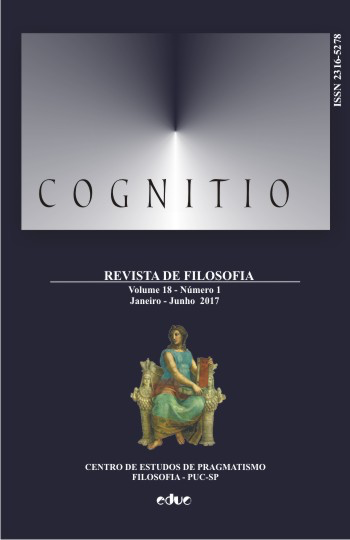Pragmatic clarifications and dispositions in Peirce’s How to Make our Ideas Clear
DOI:
https://doi.org/10.23925/2316-5278.2017v18i1p45-68Keywords:
Dispositions, Inquiry, Belief, Reality, Pragmatism (Proof of), Peirce, Helmholtz, Clifford,Abstract
The “proof” of pragmatism, and, in general, the idea that the relevance of the pragmatist maxim had to be “proved”, is a vexed question. One should be cautious before considering it. Christopher Hookway has devoted a book to this very question and the arguments often involve the consideration of minute details in Peirce’s late writings, well beyond the scope of the present paper. I will content myself, here, with a puzzle that comes before, logically and chronologically: scholars have long taken for granted that Peirce applied, within a new logical and metaphysical context, Bain’s doctrine that a belief was a “preparedness to act” and that this application provided the core of Peirce’s first pragmatism. I think that even in the first texts, that is not exactly true, and contrariwise to what is often held, dispositions to act do not play such an obvious role in the Illustrations of the Logic of Science. To put it in a nutshell, it is not clear whether Peirce’s examples were actually, at that time, pragmatic examples. The first section of this paper provides a tentative roadmap to assess the sundry dimensions of Peirce’s Pragmatism in the 1870s, the second deals with the alleged role of dispositionalism in How to Make our Ideas Clear (hereinafter referred to as HMIC), the third one provides some contextual elements that might account for the “outburst” of dispositionalism in 1878.Downloads
Published
2017-07-10
How to Cite
Girel, M. (2017). Pragmatic clarifications and dispositions in Peirce’s How to Make our Ideas Clear. Cognitio: Revista De Filosofia, 18(1), 45–68. https://doi.org/10.23925/2316-5278.2017v18i1p45-68
Issue
Section
Cognitio Papers









